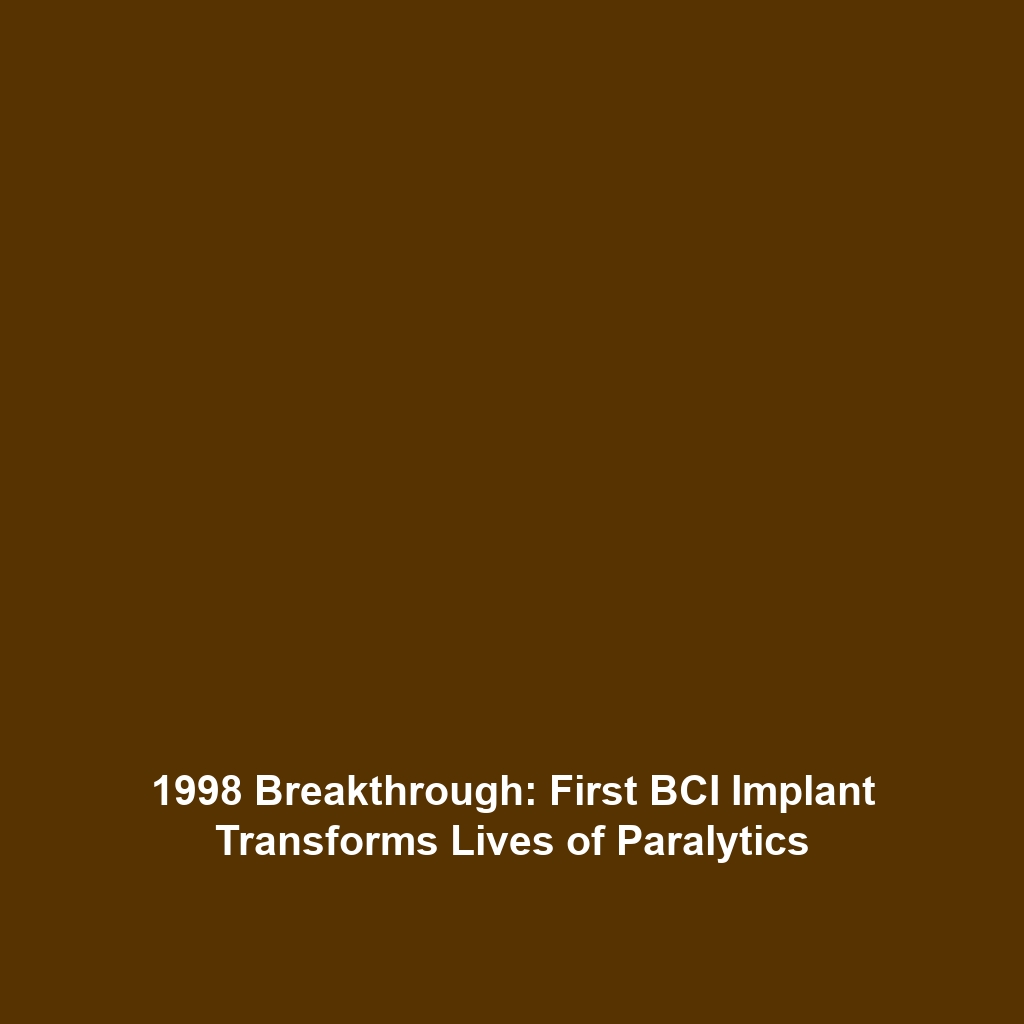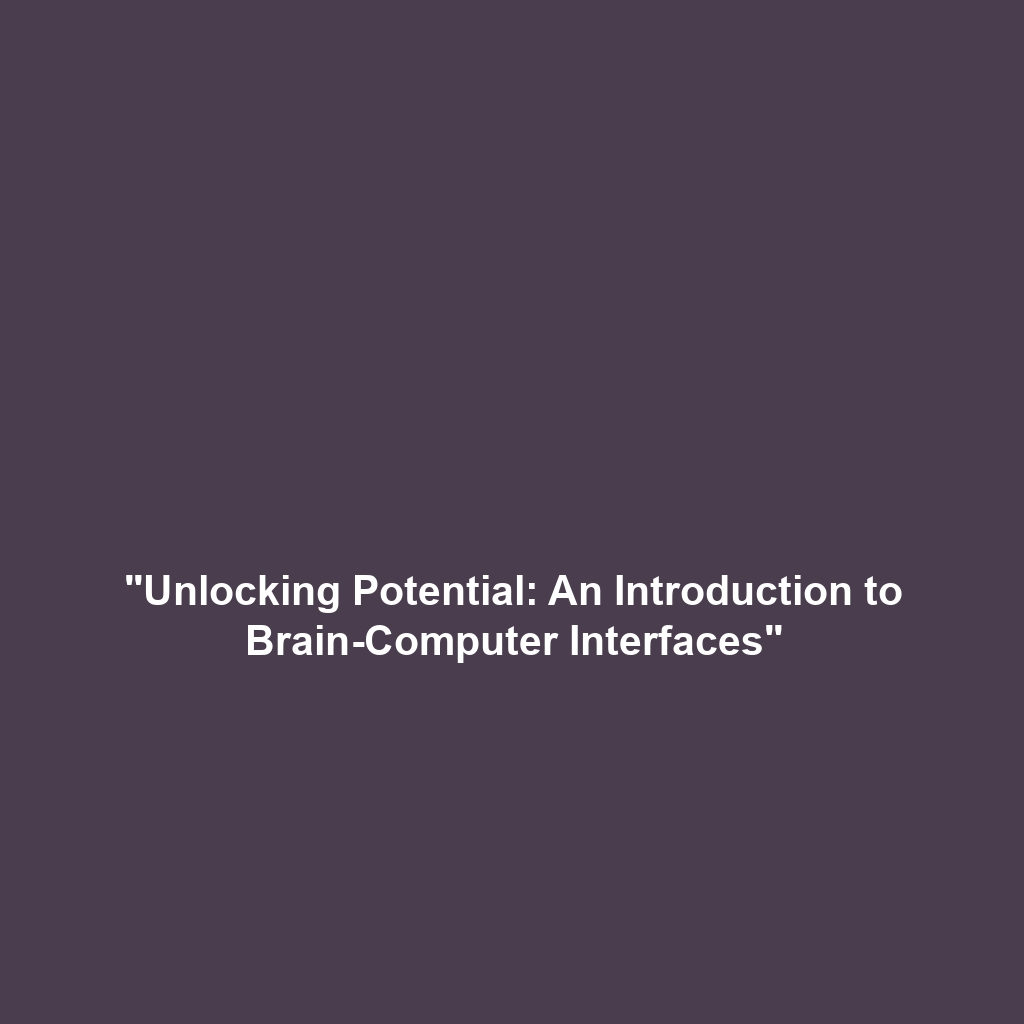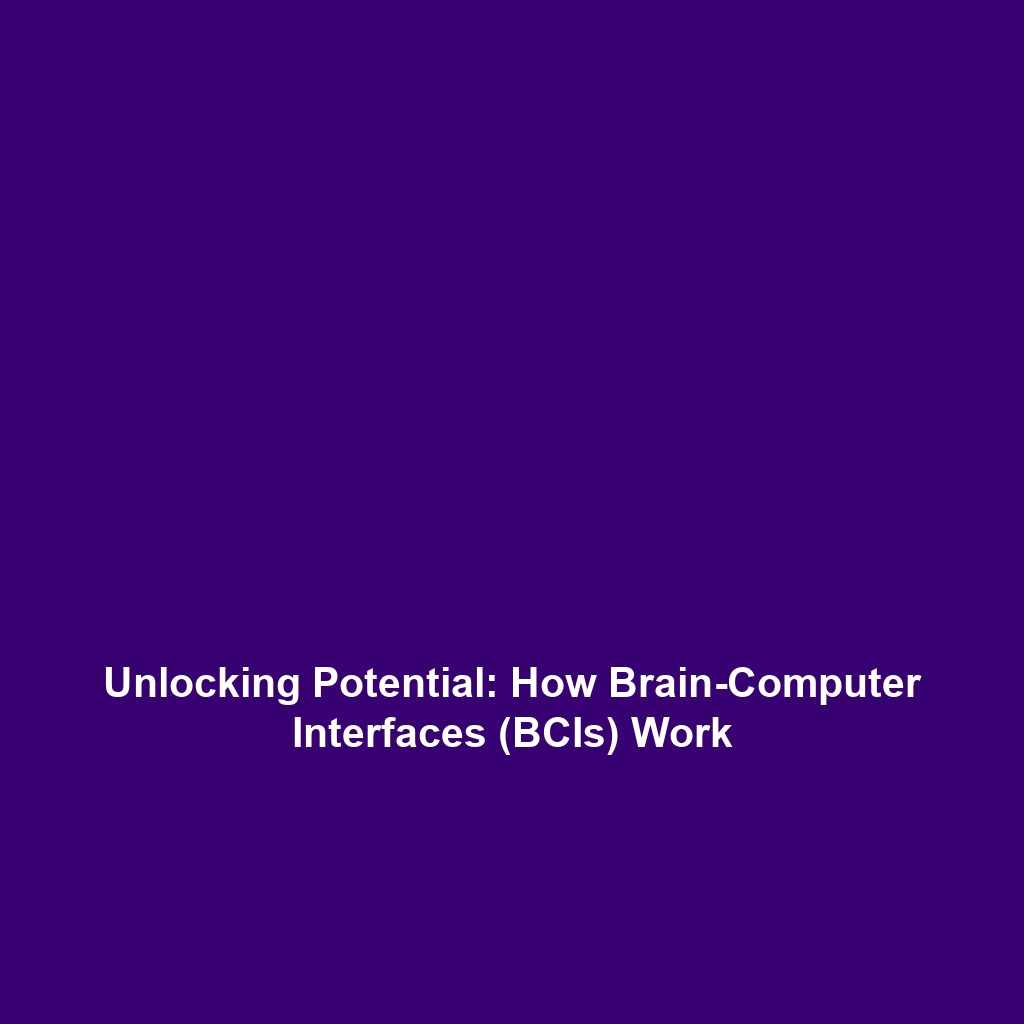Merging with Technology: BCIs as a Cornerstone of Transhumanism
Introduction
In the evolving landscape of technology, Brain-Computer Interfaces (BCIs) play a pivotal role in the transhumanist vision of merging humans with machines. This concept is not merely a scientific endeavor but a philosophical journey towards enhancing physical and cognitive capabilities. As researchers develop innovative ways to link our neural pathways with technological advancements, the implications for human evolution, personal enhancement, and social dynamics are profound. Understanding BCIs is fundamental to grasping how they may redefine what it means to be human in an increasingly digital world.
Key Concepts
The integration of technology and humanity is embodied in several key concepts within the realm of Brain-Computer Interfaces:
1. Definition of Brain-Computer Interfaces
BCIs are systems that facilitate direct communication between the brain and external devices. They decode neural activity to interpret thoughts and convert them into commands for machines, thus providing great potential for cognitive enhancement.
2. Transhumanism Explained
Transhumanism advocates for the transformation of the human condition through advanced technologies. BCIs are at the forefront of this movement, aiming to amplify human strengths and sublimating weaknesses.
3. Enhanced Capabilities
Merging with technology through BCIs is seen as a way to significantly enhance physical strength, cognitive function, and even sensory perception, marking a revolutionary phase in human evolution.
Applications and Real-World Uses
Applications of BCIs in the context of transhumanism demonstrate their transformative potential:
- Medical Rehabilitation: BCIs are used in neuroprosthetics, enabling individuals with spinal cord injuries to regain movement.
- Cognitive Performance: Some BCIs enhance memory recall and learning processes, providing cognitive aids for enhanced mental capacity.
- Gaming and Virtual Reality: BCIs enable immersive experiences in gaming, allowing players to control avatars using their thoughts.
These instances illustrate how merging with technology via BCIs is creating new paradigms in various sectors, offering invaluable enhancements to human capabilities.
Current Challenges
Despite its promise, several challenges hinder the widespread application of BCIs:
- Technical Limitations: Current technology struggles with precision and speed in interpreting complex neural signals.
- Ethical Concerns: Issues stem from the potential misuse of cognitive enhancement technologies and impacts on personal identity.
- Accessibility: The high costs and technical expertise required hinder widespread access to BCI technologies.
Future Research and Innovations
Research into BCIs is rapidly advancing, with several promising innovations on the horizon:
- Wireless Interfaces: Developing wireless BCIs that eliminate the need for invasive procedures.
- Neural Implants: Next-generation implants that integrate seamlessly with neural tissue for improved performance.
- Machine Learning Algorithms: Enhancements in algorithms that improve interpretation of brain signals for better BCI responsiveness.
These developments are set to revolutionize the way humans interact with machines, making the dream of merging with technology a tangible reality.
Conclusion
The merging of humans with technology through Brain-Computer Interfaces embodies a fundamental shift in how we perceive the potential of the human experience. As BCIs continue to evolve, they promise to reshape our understanding of physical and cognitive enhancement significantly. Continued research and ethical considerations will dictate the pace and shape of this transformation. For those interested in the advancements of brain-computer interactions, further reading on the ethical implications and technical developments is highly recommended for a comprehensive view.








